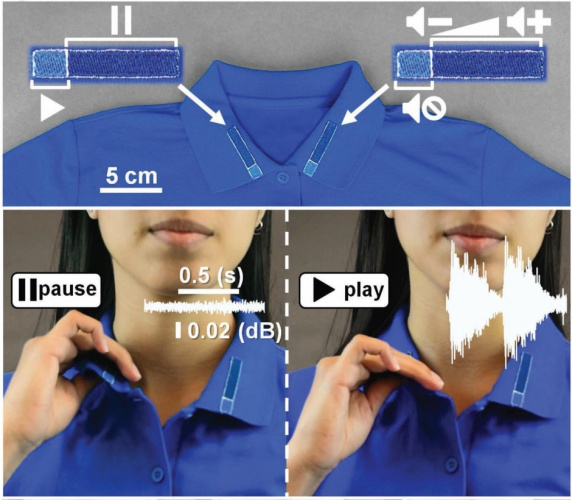
The advance by Purdue University researchers is also claimed to be waterproof and stain resistant.
"It is the first time there is a technique capable to transform any existing cloth item or textile into a self-powered e-textile containing sensors, music players or simple illumination displays using simple embroidery without the need for expensive fabrication processes requiring complex steps or expensive equipment," said Ramses Martinez, an assistant professor in the School of Industrial Engineering and in the Weldon School of Biomedical Engineering in Purdue's College of Engineering. The technology is featured in Advanced Functional Materials.
Smart fabric can detect and protect against toxic gases
Non-woven material shows potential as e-textile
"For the first time, it is possible to fabricate textiles that can protect you from rain, stains, and bacteria while they harvest the energy of the user to power textile-based electronics," Martinez said in a statement. "These self-powered e-textiles also constitute an important advancement in the development of wearable machine-human interfaces.”
Martinez said the Purdue waterproof, breathable and antibacterial self-powering fabric is based on omniphobic triboelectric nanogenerators (RF-TENGs) - which use embroidery and fluorinated molecules to embed small electronic components and turn a piece of clothing into a mechanism for powering devices.
As well as repelling water, stains, and bacterial growth, the team said that RF-TENGs ‘show excellent stability under mechanical deformations and remarkable washing durability under standard machine‐washing tests.’
They add in their paper: ‘e‐textiles based on RF-TENGs are compatible with large‐scale production processes and exhibit high sensitivity to touch, enabling the cost‐effective manufacturing of wearable human-machine interfaces.’
"While fashion has evolved significantly during the last centuries and has easily adopted recently developed high-performance materials, there are very few examples of clothes on the market that interact with the user," Martinez said. "Having an interface with a machine that we are constantly wearing sounds like the most convenient approach for a seamless communication with machines and the Internet of Things."




Poll: Should the UK’s railways be renationalised?
All public service companies should be nationalised for many different reasons, particularly railways, not the least because the tax payer has already...